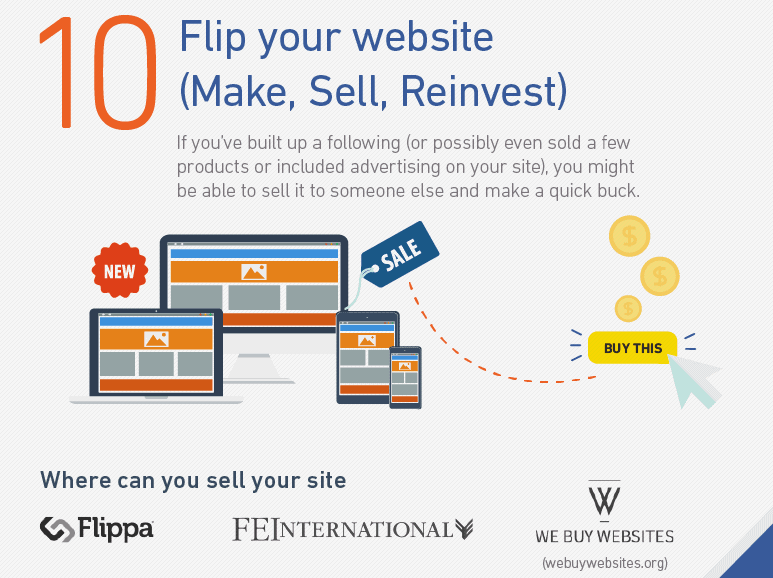Take a few mins to watch and enjoy the hard work of Ms Naomi 'SexyCyborg' Wu. U-tube link above Photo.
This video below tells the struggle of this highly intellectual women how and keep your interest with her showcase of high tech gear. She is honest and humble and corporate America is making things unnecessarily difficult for her. Watch her videos and ask yourself the creativity that went into each of her videos that are indeed memorizing. She has her own style and is very creative. Any company worldwide would be foolish not to hire her.
"FAQ: *Who is trying to bring down SubscribeStar? People who say they are Left, say SubscribeStar is processing for people on the Right who say things they don't like. Many of those people dispute they are Right. I have no way to know. Those Left people contacted PayPal, Stripe, and banks in order to get them to stop processing for SubscribeStar- hurting everyone on the platform. There are no comparable platforms to move to because Patreon seems to be working hard to maintain a monopoly. I end up moving with everyone else that has been kicked off Patreon- and many people don't like them. I get little support from any political side because many tend to object to my appearance and presentation.
*Get a real job you lazy thot. I work, on average 16 hours a day, and I take two days a month off. A lot of those hours are doing manual labor for builds or teaching myself new fabrication skills. If playing video games while sitting in an ergonomic chair shouting into a microphone is a "real job" so is the last 8 hours I spent on my feet building a CNC engraver. YouTube is an entertainment platform, people come home and want to relax watch something fun, and informative. I work hard and some people, if they are able pay me $5 a month, I think that is fair and my work is as honest as any.
*Why not move to the USA? In this case that's a bit of our of the frying pan and into the fire. While I enjoyed my visit to the US that is where nearly all the attempts to de-platform me originate. Average Chinese people have no problem with me, certainly no anger. In China the primary issue is I should not be on Western Social Media- if I stop that, then my city is a very pleasant place to live and things are improving quickly. Mass immigration is not a solution to all the World's problems, sometimes, if we can, we need to stay and try our best to solve our own problems. What about YouTube income? Very low. On October 8th YouTube suddenly throttled my account by 70-80%. No drop-off- full stop. I had many YouTube experts look at my stats, all agreed it was not organic or a result of anything I was doing. After several weeks of negotiation with YouTube, one day they suddenly let off- now it's one throttled by 40%. But it's much, much harder- all the stats are off from what they were for the past year even though updates are popular and more frequent. I can prove it, all I can do it work harder, so I am. But it means that YouTube ad income is not very much, and could disappear the minute YouTube gets pressured to defund my channel. Which is sure to happen given my track record.
*What about Drip etc? Does not allow Mainland Chinese creators, does not reply to emails. This is the case with nearly all but a few of the funding options. This puts me in violation of their TOS and I am in the same position of losing all my sponsors again at their whim. *What about GoFundMe, direct bank wire etc? Requires I provide my legal Chinese name, considering the number of people trying to make trouble for me this is not a good idea.
*What about crypto? Possibly Monero but from past experience crypto people don't actually donate, they just like to promote the tech. There are no YouTube creators fully funded this way and there are ever-changing risks to being associated with cryptocurrency in China.
*Why not PayPal It does not work for individuals in China. Really. No I don't care if you don't believe me. Ask a PRC citizen in China if you can PayPal them $1000 a month. As with a lot of these solutions- if it were that easy you would see more Chinese creators. It's not.
*What about Cocoscope? Piper is awesome and it's something I keep an eye on, but as an uncensored platform it is vulnerable to the same pressure as SubscribeStar should the "wrong" people become creators there. It also does not support 360º videos which I post a lot of. *What about making our own company processing company, or Aliexpress store etc? You need to have a massive amount of registered capital in China in order to do this. Same thing with selling good online, Aliexpress etc- I need do form a company, have employees, a ton of registered capital.
*What can you do? Thank you- honestly, I don't know. I don't solicit funds when I'm in these situations because I don't want it to seem like I am trying to profit from it. So far large media outlets effectively control the narrative and can say what they wish without consequences. New York Times was perfectly open about retaliating against my Medium article on Sarah Jeong, there is no reason to think others won't do the same if they decide I'm a threat. So I have to be very careful about asking anyone to do anything on my behalf.
*What's your plan? No one owes me a living and if I can't fund my channel I'll go back to coding. My plan is to do what I've always done when they try and keep me down- out work them. I'll get up first, go to bed last, learn what they won't and build what they can't💪"
Hoping Ms. Wu will see this at some point her is a list of other suggestions I found:
33 Ways to Monetize a Website (or a Blog)
Affiliate marketing? Amazon? Google AdSense?
 ROBERT MENING
ROBERT MENING
Last updated: Jun 3, 2016.
212 Comments
Making money from your
website isn’t a myth. It’s doable by anyone.
In fact – turning a part-time, hobby blog into an income-generating asset is fairly common with a bit of luck and some hard work.
At the very least, you should be able to make enough to cover your basic
expenses for a domain and
hosting. You might even be able to replace your income (and then earn some more).
Keep in mind that the strategies listed below range from easy and passive, to the ones which require a TON of on-going work (so make sure you pick something that suits your site and lifestyle preferences).
There are 33 total tips in this guide, but let’s start with the ten most popular (and predictable) site monetization tips.

P.S. It doesn’t matter whether you’ve
started a blog or
created a website. It works for both. If you don’t have a blog or website, use the step-by-step guides below to create one:
How to Make a Profitable Website
How to Start a Profitable Blog
10 Most Common Ways to Make Money with Your Website
Making money from your website isn’t easy. These ten tips are probably your best bet to get started.
1. Affiliate Marketing (.. and affiliate links)

Examples of a successful affiliate site: Booking.com
Affiliate marketing is one of the most popular (not to mention quickest) ways to make money from your website or blog.
Start by finding a product you like and would recommend. Then on your website, you endorse the product and promote it to your website visitors and email subscribers. If the product or service resonates with these people, they’ll click on your
affiliate link, purchasing the product (while you get a split of the sale price).
The commission might be anywhere from 30% of the product or service price, up to as high as 70%. For example, if the split is 50% and you promote an e-book that costs $100, you’ll get $50 for simply referring the buyer. Pretty sweet deal, huh?!
Where can I find products to promote?
Commission junction – offers reliable products with on-time payments.
ShareASale – mostly clothes, accessories, and other offline goods.
Clickbank – high percentage payouts, but there’s a lack of GOOD products to promote.
2. Pay Per Click Advertising (Google Adsense)

Example of a successful Google Adsense site: Mashable.com
AdWords are the advertisements that show up on the top of Google search result pages.
AdSense is the reverse, allowing publishers (which includes bloggers and other website owners like yourself) to tap into Google’s immense advertising network so that other advertisers can run ads on their website.
The best part about this system is how simple everything is.
Once you sign up, Google will place a simple code on your website that will identify the content of your site and start displaying relevant advertisements. For example, if your site is about pets (dogs & cats), Google AdSense will start showing your visitors ads for cat food, dog training and more.
You get paid each time someone clicks on the ad. (Yes, it’s really that easy!)
Your cut might be anywhere from $0.50 to $5 per click. When your site has enough traffic, you can make hundreds (if not thousands of dollars) each month.
How to apply for Google Adsense?
Apply for AdSense – Before applying, make sure you keep up with their latest
Terms Of Service. Google has very strict rules, so it’s hard to get (and stay) approved.
3. Sell Ad Space
In

corporating Google’s AdSense on your website is just one way to make money from online advertisements.
Another is to simply sell your own ad space directly to companies looking to sponsor different blogs. You can come up with a price for each space, for example: “Sidebar banner ads will cost $xxx per month”.
You can get paid depending on how many visitors you get. Typically it’s quoted as a dollar amount per one thousand impressions (or CPM). You might see it as: $5 CPM. If the website gets 100,000 visits a month, that ad price translates into $500 bucks.
The good thing about this approach is that if your site gets a ton of traffic from different sources, your simple banner ad pricing can go up to as high as $5000 per month! The obvious downside is that if your site doesn’t get a lot of traffic, you can’t expect to earn much either.
The other common method when selling ad space directly from your website is a simple direct price. You simply name a price (based on what you think it’s worth, relative to what the competition might be charging), and get paid upfront at the beginning of each month. This pricing is also generally a simple flat fee, not tied to a Cost Per Click like AdSense.
Where can I let others know that my website is selling ad space?
BuySellAds – The most popular environment to let everybody know you’re selling ad space.
4. Sell Your Own Digital Product (Ebook for Example)

You have the potential to make the most money on a per sale basis when you can sell your own directly.
That’s because there’s no middle-man or person in between you and the buyer that’s taking a ‘cut’ from the money earned.
This approach seems fairly straightforward because you can simply sell these products directly through your website and get paid immediately. Unfortunately, it’s not that simple in reality.
Creating good products that are well made and polished require a ton of time and additional resources (like design, content, etc.). There’s a lot of ‘hidden costs’ in both time spent and the contractors to collaborate with. Selling your own products on your site also brings up problematic issues like payment gateways (how are you going to collect payment?), shipping (how are you going to mail or distribute the products?) and taxes (oh man, don’t even get me started with that one!).
If it doesn’t sound like enough work already, you’ll also need a well designed, persuasive landing page to make sure your product has a strong conversion rate.
Additional resources:
How to sell products on your website.
How to set up a PayPal “Buy Now” button on WordPress
5. Accept Donations from visitors

If you don’t have a ton of monthly visits, but you do have a strong, engaged community? Simply ask your readers to donate!
Accepting one-off donations isn’t a fast road to wealth, but it can help you cover expenses in the short-term if people like what you have to say and want to support your journey.
For example, PayPal offers little donation buttons that only take about ten minutes to add to your website, offering you a quick way to recoup what you might be spending on a
good web hosting, new product creation, research, and all of the other costs to maintain a healthy, active blog.
For example, web.archive.org makes a lot of money from donations (most likely due to their millions of visitors per month).
How to set up donation buttons?
How to take donations on your website – The right way.
6. Accept sponsored posts & articles (…but use nofollow tag)

One of the common ways to make more money from your website means getting those visitor numbers UP.
Once you’ve done the hard work of
building steady traffic to your site with an engaged community, there are a few different ways to monetize your hard work.
For example, many companies go out of their way to look for blogs that will feature their sponsored content. ‘
Native advertising‘ like this works well because it lines up with your site’s primary content and it comes across as relevant and transparent.
You can also review the products from a company in an ‘advertorial’ that’s part content, part advertisement. For example, if your website is all about the latest iOS games for iPhones and iPads, the creator of one of those ads would LOVE to have you review and feature their app to your fans.
When done right, this can create a win/win scenario. However – done poorly, with irrelevant or inauthentic site content, it can erode all of the reader’s goodwill you’ve worked so hard to create in the first place.
For further reading:
How to make money through sponsored posts and reviews – About.com
7. Generate ‘leads’ for other companies

Businesses thrive on new leads coming in their door to inquire about their products or services.
It’s no surprise that they’re alwayson the lookout, searching for creative ways to find new sources of leads to help them grow.
For example:
Let’s say you have a website about teaching math skills. Your reader’s information (like their email address or phone number) would be of great value to different online schools who’re looking to sell their courses to eager, proactive students.
Basically, you’re connecting the dots; playing the matchmaker by introducing two parties who can benefit one another. While it’s similar to how affiliate marketing works, in this case, it doesn’t actually matter if your reader ends up purchasing their product or not. They’re just looking for an introduction at this point.
Where can I find such offers?
MaxBounty
Neverblue
Peerfly
8. Build an ‘Email List’

Spend any amount of time reading blog growth tips, and you’re sure to come across people saying “the money’s in the list“.
They’re referring to your email list, which comprises your most loyal readers. The objective is to convert as many strangers who visit your site for the first time into passionate followers who want to stay up-to-date on your latest work or content.
Admittedly this is a long term strategy (and you definitely won’t get rich overnight). But it’s one of the best, long-term methods to profitably growing your blog into a full-fledged, money making enterprise.
Never lose sight of creating relationships with your followers. Offering great information or free help is a perfect way to start. Spamming people with unsolicited offers is one of the fastest ways to abuse reader’s trust and sabotage your long-term goals.
How does it EXACTLY work?
Listbuilding 101 – Probably the best introduction on the internet.
How to build a list with your website
Best Email Marketing Services
9. Set up an e-commerce site (hard work is required)

Websites don’t just have to be about content. They can be centered around tools or products on an online store.
Be forewarned:
There are literally hundreds of thousands of eCommerce websites or online stores. Make sure that yours is filling a unique niche, with a detailed strategy and the
latest marketing techniques to stand out from the crowd.
How do I create a successful online store/shop?
How to Make a WooCommerce Shop (WordPress)
How to Make Shopify E-commerce Store (Shopify)
10. Flip Your Websites (Create -> Sell -> Reinvest)

Believe it or not, there’s almost always a market out there for your website.
That means if you’ve built up a following (or possibly even sold a few products or included advertising on your site), you might be able to sell it to someone else and make a quick buck.
To be honest, I typically don’t suggest people to plan on flipping their website or blog (I’m a bigger fan of creating something for the long term).
You can’t deny how lucrative it can be. For example, if your website is making $500 per/month through selling ad space, you might be able to sell the site for $5,000 – $10,000 (which is about 12x – 22x monthly income).

Another interesting option is to sell
ready-made sites, These are MUCH cheaper, but there’s still some money to be made.
Where can I sell my site?
Flippa – The most popular website market.
We Buy Websites – Another popular marketplace.
FEinternational – Mostly for high-end websites.
By now we have counted down some of the most popular ways to earn money from your website.
Yet, we’re still only just scratching the surface.
Below are another 23 ways to make money with your website.
(Keep in mind that some of them are slightly connected with the ones above yet they are little ‘out of the box’.)
Another 23 ways to monetize your website

11. Sell text-link ads (NOT RECOMMENDED) – There’s still a demand for text-links ads (believe it or not). But please keep in mind that these violate
Google’s Terms of Service (which means you run the risk of getting penalized).
To avoid it, simply keep the ‘nofollow‘.
12.
Set up “infolinks” – Infolinks are a great alternative to AdSense advertisements, that are very easy to setup. The downside is that they aren’t high in converting, and the payouts (on a per click basis) are also quite small.
13.
Use monetization widgets – These are also very similar to Google Adsense, so they’re worth trying out as an alternative.
14. Set up RSS feed ads. – Exactly what they sound like. Ad space for sale in-line with content from an RSS feed.
15. Give away premium content for extra $$$ – If you are producing mind-blowing, awesome content that visitors can’t get enough of… you can always try asking them to pay for some of it! (Crazy concept, huh?!) I’m personally fine with paying for premium content. Bear in mind – don’t ask people to pay right away. Instead, stay focused on growing an audience and visitors first.
16. Start a private forum or coaching class(es) – Most of us have unique skills that others can benefit from. Setting up a simple forum or classes is an easy way to help others and generate recurring income at the same time.
17.
Create a job board – Setting up a job board on your website is another simple, easy way to collect additional money when people are accepting different job offers from various companies or individuals.
18. Offer consulting – Offering consulting gigs and providing services can help you bring in decent sums of money while other forms of ‘passive’ revenue take a little time to build up. You can offer these services via email, forum or even Skype.
19. Add “hire me” page on your website – Your new website or blog is also a perfect place to feature your freelancing services. Showcasing samples or evidence of past work will help greatly increase your chances of getting hired.
20. Sell or rent internal pages – These aren’t very common, but you might be surprised at what people would be willing to rent or spend money on!
21. Display pop-ups advertisements – Pop-ups can be extremely annoying. However, they’re also another easy way to make some quick money.
22.
Use content lockers – ‘Content locking’ is similar to hiding or protecting pieces of content until a visitor takes some action to redeem it. For example, maybe you want them to pay a small amount, or perhaps click on an advertisement.
23.
Display audio ads – These are relatively new and are becoming increasingly more common. Personally, I haven’t tried it. But I have read some articles and it definitely looks promising.
24.
Sell an e-book – This one is a no-brainer. Many people sell e-books through their site. Some examples: If you have a website about recipes and cooking, you can easily create and sell your own recipe book. The same applies to almost every niche.
25. Create a conference around your website – Lots of work but a huge potential payoff as well.
26. Set up a teaching program – Kinda like a cross between selling your own content and offering consulting or services.
27. Host paid webinars – Similar to the last tip, which is largely a mix of consulting through content and a teaching program.
28. Create a membership site – Yet another tier on the ‘info-business’ model that has the added benefit of bringing in recurring revenue.
29. Offer coupons (with affiliate links) – People are eagerly looking for discount & promo codes for everything from clothes to travel vacations. If you can (find and) offer a valid one, you can also get a cut of that revenue too.
30.
Host polls on your website – Hard to believe, but easy to do!
31. Offer writing gigs – You can easily make $20 – $30 per 500-word articles writing for other companies or individuals. There’s also a huge potential for fluent speakers of different languages, as many companies want their websites translated by those who speak the native language.
32. Create a paid directory/business page – You charge people for listing or subscribing to the page.
33. Just copy what others are doing – My personal favourite!

P.S. If you wish to use this infographic on your website, feel free to do so.
Download the full infographic here (.png)
P.S.S. If you know any other ways to monetize websites, let me know in the comment section. I’ll add it to the list and credit you by putting your name under it.































 Examples of a successful affiliate site: Booking.com
Examples of a successful affiliate site: Booking.com Example of a successful Google Adsense site: Mashable.com
Example of a successful Google Adsense site: Mashable.com corporating Google’s AdSense on your website is just one way to make money from online advertisements.
corporating Google’s AdSense on your website is just one way to make money from online advertisements. You have the potential to make the most money on a per sale basis when you can sell your own directly.
You have the potential to make the most money on a per sale basis when you can sell your own directly. If you don’t have a ton of monthly visits, but you do have a strong, engaged community? Simply ask your readers to donate!
If you don’t have a ton of monthly visits, but you do have a strong, engaged community? Simply ask your readers to donate! One of the common ways to make more money from your website means getting those visitor numbers UP.
One of the common ways to make more money from your website means getting those visitor numbers UP. Businesses thrive on new leads coming in their door to inquire about their products or services.
Businesses thrive on new leads coming in their door to inquire about their products or services. Spend any amount of time reading blog growth tips, and you’re sure to come across people saying “the money’s in the list“.
Spend any amount of time reading blog growth tips, and you’re sure to come across people saying “the money’s in the list“. Websites don’t just have to be about content. They can be centered around tools or products on an online store.
Websites don’t just have to be about content. They can be centered around tools or products on an online store. Believe it or not, there’s almost always a market out there for your website.
Believe it or not, there’s almost always a market out there for your website.
 11. Sell text-link ads (NOT RECOMMENDED) – There’s still a demand for text-links ads (believe it or not). But please keep in mind that these violate
11. Sell text-link ads (NOT RECOMMENDED) – There’s still a demand for text-links ads (believe it or not). But please keep in mind that these violate 
